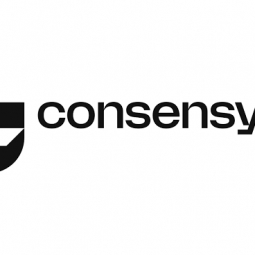Proof of Concept for Her Majety’s Land Registry (HMLR) demonstrates the ability of blockchain technology to increase transparency and cut costs in real estate

Customer Company Size
Large Corporate
Region
- Europe
Country
- United Kingdom
Product
- Title Token
- Codefi Assets
- MetaMask
Tech Stack
- Blockchain
- Smart Contracts
- Ethereum
Implementation Scale
- Pilot projects
Impact Metrics
- Cost Savings
- Digital Expertise
- Productivity Improvements
Technology Category
- Application Infrastructure & Middleware - Blockchain
Applicable Functions
- Procurement
Use Cases
- Smart Contracts
- Asset Lifecycle Management
Services
- Software Design & Engineering Services
About The Customer
Her Majesty’s Land Registry (HMLR) is the UK government department responsible for recording ownership titles on lands and properties. It manages records for 25 million titles on lands and properties valued at over £7 trillion. HMLR is tasked with maintaining a comprehensive and up-to-date record of all registered and unregistered land in England and Wales, as well as providing reliable information on ownership and boundaries. The department plays a crucial role in the real estate sector, providing transparency and security in the property market.
The Challenge
Her Majesty’s Land Registry (HMLR), the UK government department responsible for recording 25 million ownership titles on lands and properties valued at over £7 trillion, was facing several challenges in the real estate market. The existing process was cumbersome and costly, with high minimum tickets for investment, multiple dislocated parties and expensive intermediaries required for transactions, and low levels of transparency. The secondary markets were isolated and continued to rely on manual processing. Individuals and companies seeking to participate in the real estate sector had to rely on agents to manage the owner registry, transaction, and administration. This process was inefficient and added multiple layers of cost and friction.
The Solution
HMLR partnered with ConsenSys Codefi to explore the use of blockchain and smart contract technology to aid speed, simplicity and transparency in the real estate market. They created a prototype “Title Token” representing shares of a property and issued the token on Codefi’s digital asset marketplace. The process involved 8 steps, from property owners requesting Title Tokens to regulators having access to view high-level token data. Codefi Assets enabled the easy creation and deployment of smart contracts on the Ethereum mainnet based on the ERC1400 standard. These highly configurable smart contracts and security tokens have features like support for force transfers, burns and mints by an administrator, trade restrictions through off-chain certificate generation, and partial fungibility.
Operational Impact

Case Study missing?
Start adding your own!
Register with your work email and create a new case study profile for your business.
Related Case Studies.

Case Study
Coca-Cola Refreshments, U.S.
Coca-Cola Refreshments owns and manages Coca-Cola branded refrigerators in retail establishments. Legacy systems were used to locate equipment information by logging onto multiple servers which took up to 8 hours to update information on 30-40 units. The company had no overall visibility into equipment status or maintenance history.

Case Study
IIC - Track and Trace Testbed
Factory systems can detect - within a meter - the location of a tool; Misuse of tools can result in serious accident or injury; The production of many industrial and consumer goods requires exacting work - down to the precise force used to tighten a screw. GOAL Manage smart, hand-held tools in manufacturing, maintenance, and industrial environments

Case Study
IIC Asset Efficiency Testbed
A recent study on maturity of Asset Efficiency from Infosys and the Institute for Industrial Management (FIR) at Aachen University revealed that 85 percent of manufacturing companies globally are aware of asset efficiency, but only 15 percent have implemented it at a systematic level. Current challenges include lack of instrumentation of the assets, missing real-time data analytics, lack of context due to missing information from other systems, and lack of a holistic focus with other aspects of efficiency like energy, utilization, operations, and serviceability.GOALTo collect asset information efficiently and accurately in real-time and run analytics to make the right decisions









